A spacecraft is a general name for manned and unmanned vehicles of various purposes. They are designed to perform tasks in outer space or on other celestial bodies.
Alien ships are a popular element of science fiction and children's entertainment. These unusual vehicles can be depicted in various shapes and sizes.
Necessary materials and tools
Drawing with pencils requires various tools and materials that help the artist create various effects and textures. Their choice depends on the style of the image, professional preferences and individual tasks of the artist.
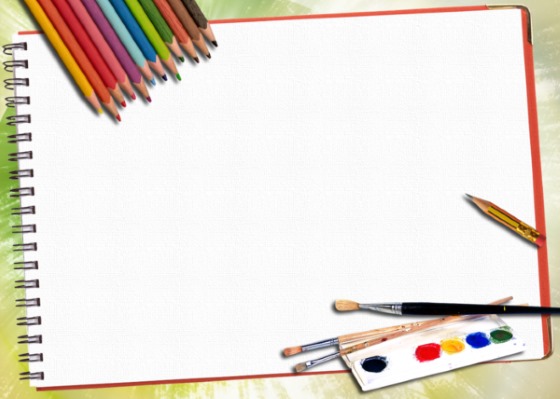
| Tools and materials | Brief description |
| Paper | There are different types of paper: from Whatman paper and thick watercolor paper to thin drawing paper, which creates the effect of airiness and lightness of the image. It can be smooth or textured, which also affects the overall appearance of the drawing or sketch. |
| Graphite pencils | They come in different hardness, thickness and shape. Hardness is designated by the letters B (soft), H (hard) and F (medium). For different types of work, the following are used: soft for sketching, hard for detailing and medium for general sketching. Graphite pencils come in different sizes, allowing artists to create works of different scales. Graphite rods vary in colour, from light grey to dark grey. |
| Charcoal pencils | They are made of compressed coal. They can be different in shape and thickness. Charcoal pencils have different hardness: B (soft), HB (medium hard), 2B (soft and covering), 4B (very soft and covering). Thickness varies from 3.5 to 12 mm. Charcoal pencils give darker strokes than graphite pencils. |
| Sanguine, sepia, sauce | These 3 tools have similar characteristics. They are suitable for sketches and drafts, used for detailed work. These materials provide a wide range of tones and a variety of textures of the drawing. Sepia is softer than sanguine and sauce. The last 2 materials allow you to make thinner lines. A distinctive feature of all 3 tools is the ability to achieve a shading effect. |
| Colored pencils | Allows you to use different shades and colors to create compositions and images. They differ in the hardness of the lead, which is indicated by a letter and a number on the body. The higher the number, the softer the lead and the richer the color. |
| Erasers | Erasers are used to correct lines and remove unsuccessful fragments of the drawing. They come in different types and hardness - from soft, designed for delicate correction, to hard, allowing you to completely erase large areas of the drawing. |
| Klyachki | They help soften the edges of lines and create soft transitions between elements of the drawing. The pens leave traces on the paper similar to pastel. |
| Stencils | Simplifies and speeds up the process of creating some objects and drawings. With its help, you can reproduce images many times. |
| Rulers, compasses | A ruler is a simple tool for measuring distances and drawing lines. It is used to determine the proportions and sizes of elements in a drawing. A compass allows you to create perfectly even circles and arcs. It is useful for artists creating works that require precise geometric drawing. |
| Sharpeners | This is an auxiliary tool designed for sharpening artistic pencils. The most common mechanisms are sharpeners with a cylindrical blade and with a rotating cutter. |
Master classes
Modern spacecraft are complex technical systems consisting of many subsystems that ensure their reliable operation in difficult space conditions.
The spacecraft in the figure is designed taking into account a number of requirements:
- structural strength and thermal protection to ensure safety during launch and during flight in the Earth's atmosphere;
- the ability to support the life and performance of the crew;
- the presence of control and navigation systems for orientation in space and the completion of assigned tasks;
- the ability to dock with other spacecraft to transport cargo and transfer people.
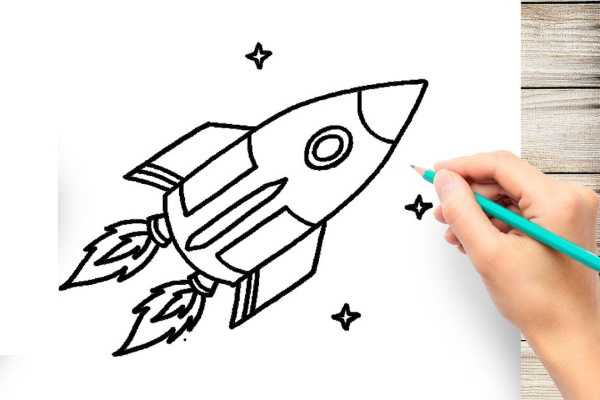
Modern cinema often shows alien spaceships - they are bright, have an unusual shape and are equipped with weapons or other special effects:
- It is a small aircraft with smooth body lines that can reflect light and shimmer with all the colors of the rainbow.
- There are flashing lights on the ship's hull that give the impression that the ship is alive.
- Inside the ship there is a pilot's cabin with a control panel that looks like a game console with brightly colored buttons and switches.
- The spaceship is equipped with a powerful engine that allows it to instantly move through space and cover huge distances.
- The ship can be equipped with docking devices that allow it to connect with other spaceships and create huge flotillas.
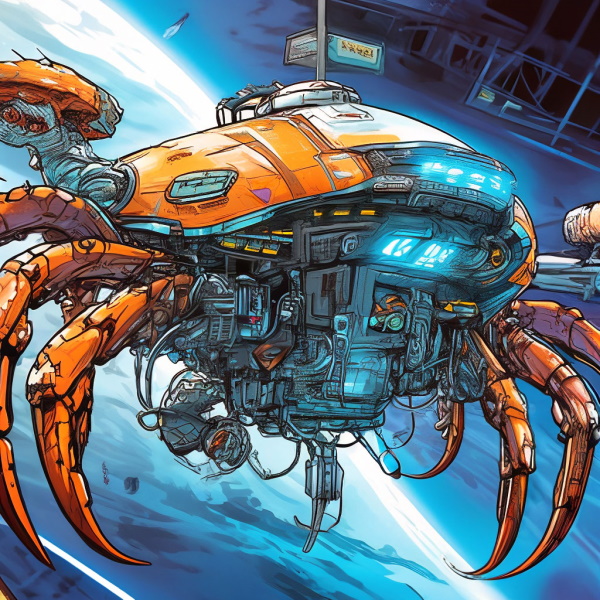
Alien Design Spaceship Ideas:
- The ship's design resembles a crab, with retractable claws and large compound eyes. It has the ability to camouflage itself.
- Spaceships resemble spiders because of their long, curved "legs." They can use them to move around and grab objects.
- The design is inspired by the shape of fish. It can swim in space as if it were water and has sensory organs similar to fins and a tail.
- A spaceship that takes its design from beetles. It has horns and bulging armor, giving it a menacing appearance.
- The ship resembles an elephant, but its legs are mobile tracks that allow it to move across various planetary surfaces.
- The cute spaceship is shaped like a unicorn. The carved horns are used to communicate with other ships and repel enemy attacks.
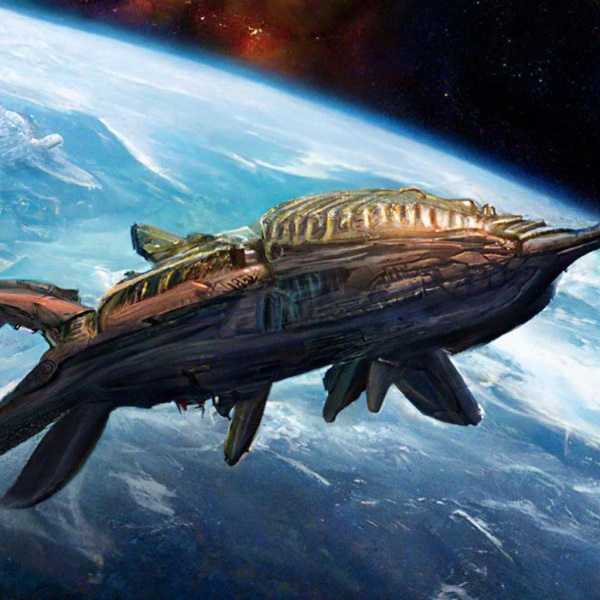
- The design of the spaceship resembles a snail. It can move very quickly and roll up into a round ball for protection.
- The fast ship resembles a speedboat. Its streamlined shape makes it very fast.
- A small and very fast ship of a round shape. When colliding with an enemy, the ship can increase its diameter and build up protective armor.
- A large ship can split into several smaller shuttles, resembling a slithering snake, allowing it to cover more ground during a reconnaissance mission.
"Union"
Soyuz is a series of Russian spacecraft designed to deliver astronauts to the ISS and return them to Earth. It is a 3-seater spacecraft.
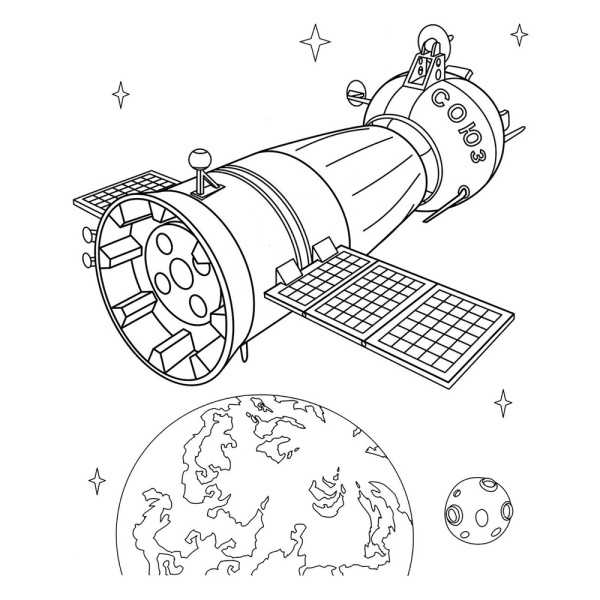
Consists of 3 main parts:
- The orbital compartment serves as a place for the crew to live during the flight and to conduct scientific research.
- The descent vehicle ensures the safe return of astronauts to Earth.
- The instrumentation and assembly compartment contains all the necessary control and life support systems.
Soyuz spacecraft are equipped with docking ports that allow them to dock with other spacecraft.
The spaceship in the picture can be depicted as follows:
- Draw the outline of the spaceship. Mark the location of the main elements of the ship, such as engines, stabilizers and other important details. Pay attention to the correct proportion of the ship in relation to the space around it.
- Draw a larger circle - this is the planet Earth, a smaller circle for the Moon. Place these 2 celestial bodies at different levels relative to the ship.
- Draw stars in the background. They can be of different sizes and brightness, creating the effect of the night sky.
- Work out the details of the ship: engines, stabilizers, wing mounts, nose, orbital compartment, descent module, instrument and assembly compartment. Add elements such as portholes, antennas and navigation lights.
- Use dark tones to depict continents, lighter tones for seas and oceans.
- Depict craters on the surface of the Moon using dark circles or dots.
- Add color. Use different shades of blue, red and white to simulate space, metal parts of the ship and other elements.
"Buran"
This is a reusable spacecraft developed in the USSR as part of the Energia-Buran program. The spacecraft was designed to conduct space research and deliver cargo to Earth orbit.
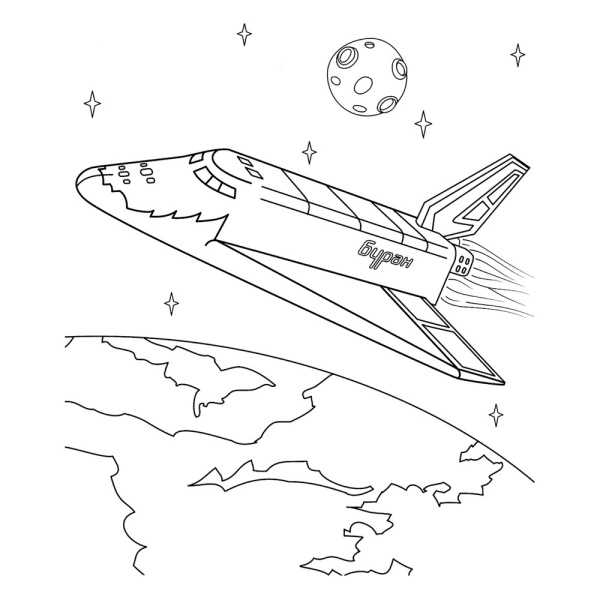
"Buran" is capable of landing on an airfield independently. The device consists of several key elements: an aerospace aircraft, the "Energia" rocket system, and a launch and landing complex.
The spaceship in the picture is created using the master class:
- Start by sketching the general outline of the ship. Use light and clear lines so that it will be easy to make changes later.
- Draw the hull of the ship. It has a wedge shape, which makes it look like an airplane. The hull has a sharp bow and rounded corners.
- Create an image of the Earth as an arc. The planet should be slightly offset to the left from the center of the drawing. The arc should not intersect the ship's hull, otherwise it will seem as if the ship is crashing into the Earth.
- Draw a circle at a small distance above the ship's hull - this will be the Moon. Do not make the circle too big or too small in relation to the size of the ship. The diameter of the Moon should be approximately 5 times smaller than the length of the ship.
- Draw stars around the ship and the Moon. They should be at different distances from the ship and have different brightness, creating the impression of deep space. Do not draw many stars - a few are enough to create an atmosphere.
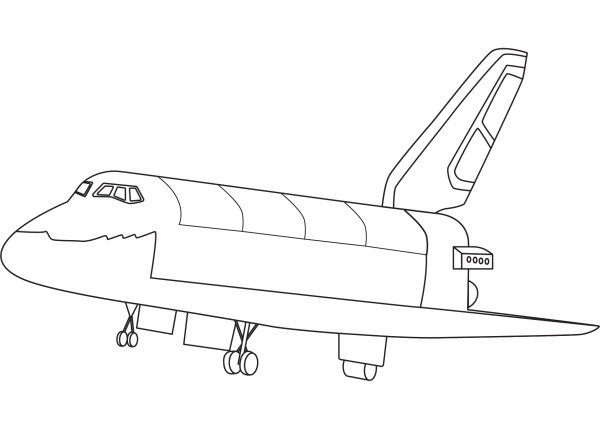
- Draw a rocket system that is located on the ship's hull. It may consist of different parts, such as nozzles, fuel tanks, and pipelines.
- Add other elements: launch and landing complex (chassis), engines (turbines), stabilizers (for stability in flight), antennas (for communication) and portholes (windows).
- Below the ship's hull, add the outlines of the continents on the arc representing the Earth. This can be done with light strokes that will create the impression of continents and oceans.
- Draw craters on the Moon in the form of circles of different sizes.
- The drawing can be colored.
"Enterprise"
The USS Enterprise (NCC-1701) is a fictional starship from the Star Trek universe that has become an icon of the franchise.
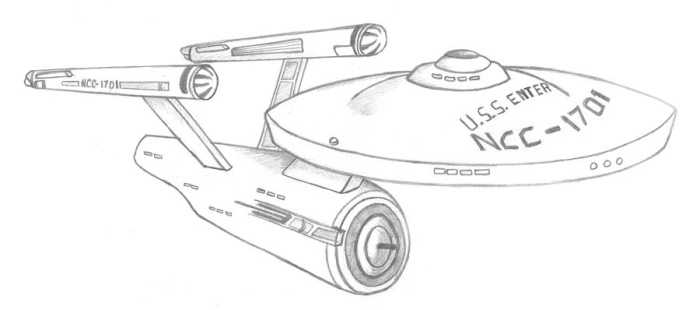
It is a research vessel that carries out a mission to study and explore outer space, search for new civilizations and establish interplanetary contacts.
To draw a ship in perspective, it is recommended to choose one of 3 types of perspective: frontal, angular or aerial.
This master class uses angular perspective, which allows you to depict a three-dimensional image of a ship:
- Apply general outline lines of the ship: round living compartment, warp engines, engine room and other details.
- Draw a massive round hull of the ship, which is made of super-strong alloy. Here is the sensor system and antennas, which are used to scan space and communicate with other ships. At the top is the cruise engine.
- Draw a warp propulsion system that allows a ship to travel through space at speeds significantly greater than the speed of light.
- Show details of the massive engine power cores that generate high energy fields. There are 2 of them, and they tower over the engine.
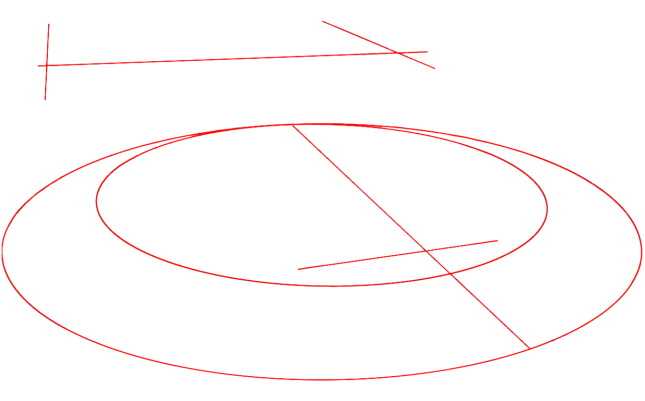

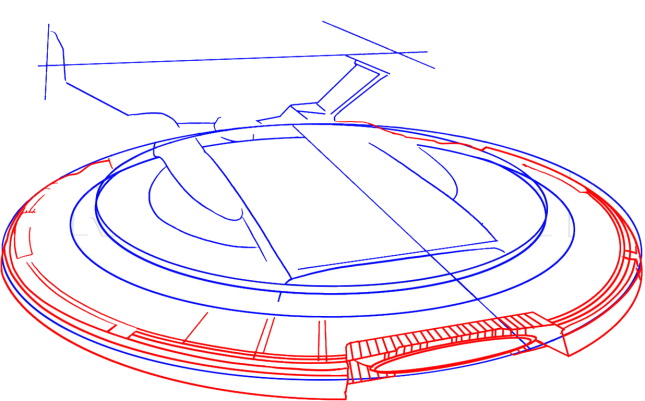
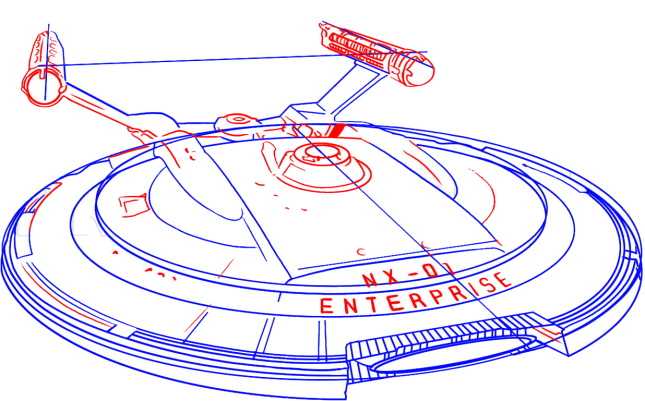

- Depict powerful energy weapons capable of hitting targets at great distances. Laser guns are used to destroy enemy ships, torpedoes are used to deliver devastating blows to targets on the surface of planets.
Protective shields provide additional protection from enemy fire.
- Draw portholes that are distributed around the hull and have the shape of a circle or rectangle.
- To create volume and realism of the image, use different types of hatching. You can add shadows and light to emphasize the relief of the details.
"Star Destroyer"
The Star Destroyer in the Star Wars universe is a powerful Imperial warship.
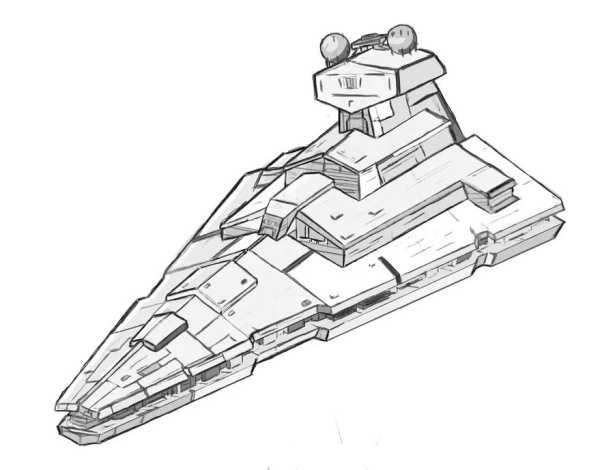
The Star Destroyer spaceship is illustrated by starting from the basics and gradually improving the details by following the steps and recommendations:
- Sketch the main lines and shapes of the ship. Pay attention to the general proportions and contours, without going into details.
You can draw a triangle that will serve as the base of the ship's hull, add 2 slanted lines for the top of the ship and connect them to the main shape of the hull. You can include additional lines in the drawing to reflect the design features of the ship.
- Work on the hull, including the superstructure. It has a triangular shape and is covered with armor. When drawing the hull, use straight and curved lines to convey the volume of the ship.
- Above the hull, depict a hangar: a place where fighters and other small ships are located.
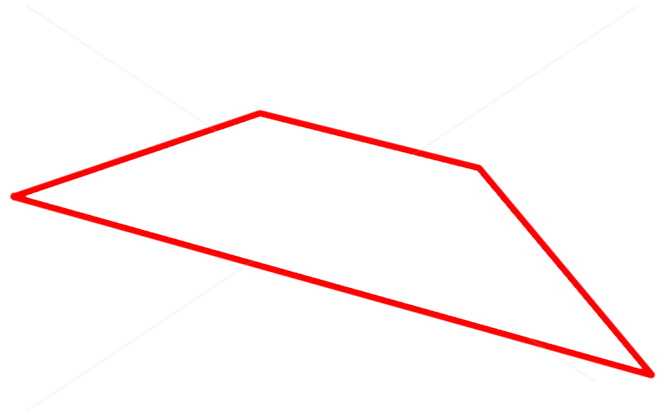
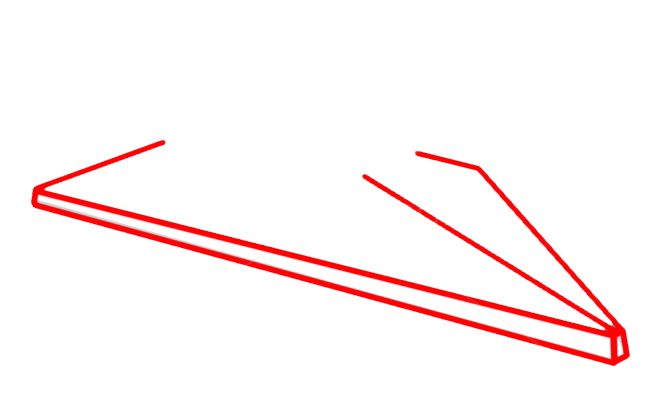

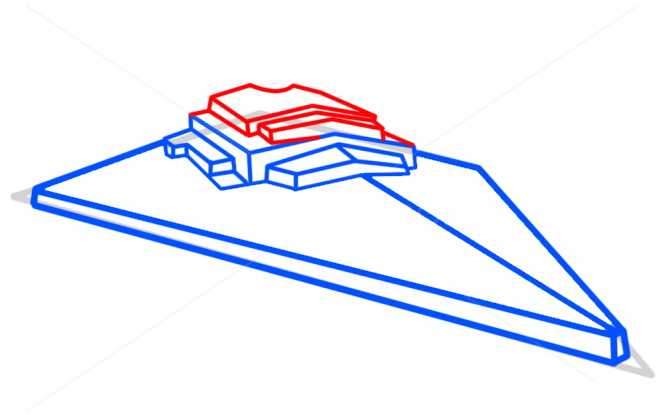



- Place an engineering compartment above the hangar.
- Draw the captain's bridge: This is the ship's control center, where the captain and his crew are located. It is equipped with advanced navigation and control systems.
- "Destroyers" have complex communication systems that allow the crew to exchange information with other ships and bases. Add additional elements such as antennas, radars. They can be located around the perimeter of the ship, be round or rectangular.
- The "Destroyers" are equipped with a variety of weapons, such as laser cannons, ion cannons, and turbolasers. Draw them around the perimeter of the ship.
- Add volume to the ship using shading.
"Flying saucer"
The "flying saucer" can take many forms: it can be a simple disk or more complex geometric structures. It is known as a UFO (unidentified flying object).
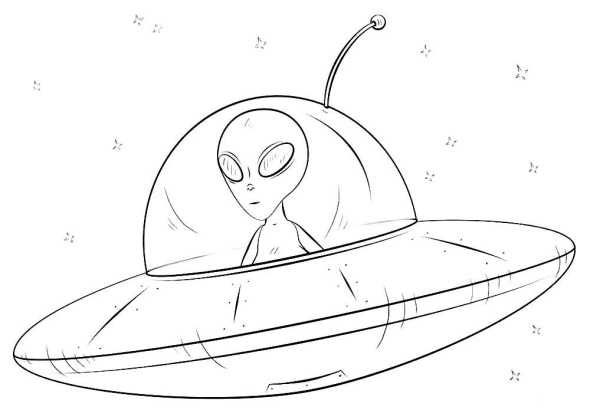
"Little green men" are depicted as humanoids with green skin, large eyes and thin limbs.
The spaceship in the picture with a humanoid inside can be drawn by following these steps:
- Start by sketching the basic outlines of the flying saucer. Consider its shape, height, and width. Mark the place where the humanoid will sit.
- Draw the basic outline of the flying saucer: the outer edge, the base, the sides and the center of the saucer. Use light lines to make it easy to erase if necessary.
- Create a humanoid figure that will be placed inside the "flying saucer". Use simple shapes to quickly define the main parts of the body, such as an oval for the head, a rounded triangle for the torso, and short lines for the limbs.
Give the humanoid huge oval eyes, a small nose and mouth. Highlight the chin. The humanoid's hands are on the control panel, so only their upper part is visible.
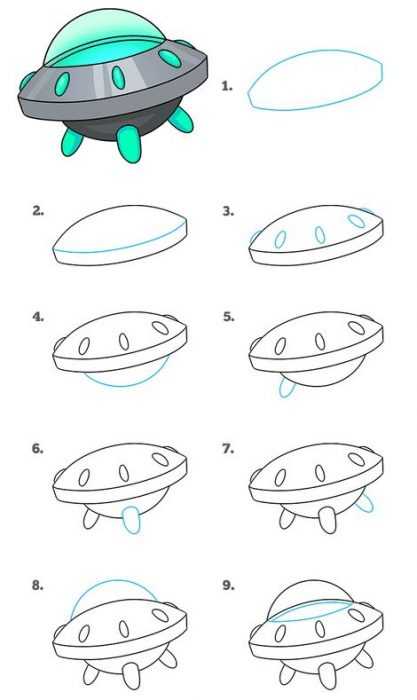
- Add an antenna with a ball on the end.
- Use shadows and light to create the illusion of volume. Mark shadows on the bottom of the plate and in places that should be dark due to light sources. Add light areas in places illuminated from the inside or outside.
- Paint gradually, starting with the primary colours and adding shades and tints to create depth.
Tips for Beginners
Important aspects of drawing spaceships:
| Basic principles | Brief description |
| Spaceship designs | It is recommended to familiarize yourself with images of spacecraft from different angles. For a more detailed visual representation, you need to study specialized resources. This will help you better understand the proportions of the hull, the details of the skin, the location of the portholes and other design features of spacecraft. |
| Concept | It is necessary to think about the shape of the spaceship, the overall dimensions and details. Decide which historical period, style or author's concept will be decisive. |
| Basic proportions | Guided by the ideas of the previous stage, create a sketch of the main lines of the spaceship contour. Pay attention to the geometry of the main shape of the hull and its parts. Consistently add new lines and elements. |
| Details | Start with the basic contours and shapes of the spaceship. Important details include engines, antennas, windows, and other design elements. Introduce elements such as turbines, wings, hatches, and other design features into the drawing. |
| Color scheme | Add lighting effects, shadows, reflections and highlights to give your spaceship dimension and depth. |
| Background | It is necessary to select a base for the space landscape. The background can be dark shades of blue, black or purple. You can create a background using bright shades of blue, green or orange with the addition of white for a glow effect. It is permissible to use these colors to create the illusion of a cosmic abyss. You can depict stars, planets and nebulae that emphasize its presence in deep space. |
| Shadows and Light | Light effects and reflections should be emphasized to make the spaceship more expressive. Small details such as glare on surfaces or small shadows should not be forgotten. |
Spaceships are often associated with science fiction worlds. To create an interesting drawing, you need to pay attention to details, perspective, light and shadow.
Spaceships offer scope for imagination and a chance to immerse yourself in the world of science fiction. They allow you to imagine how space might be explored.
Video about drawing
Spaceship - drawing:
